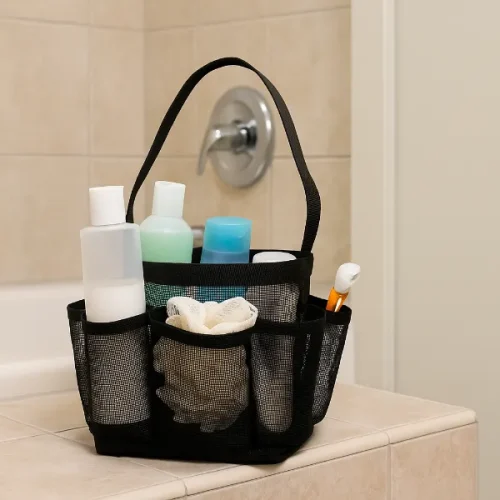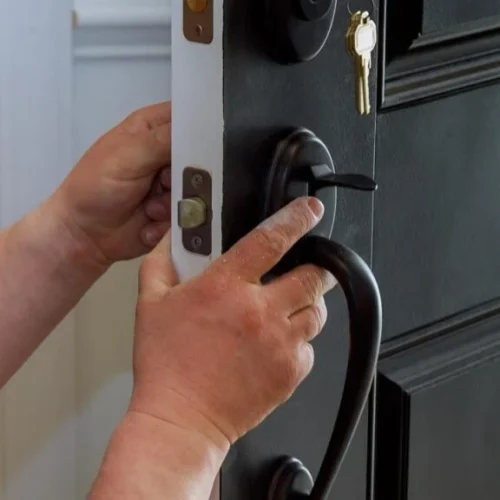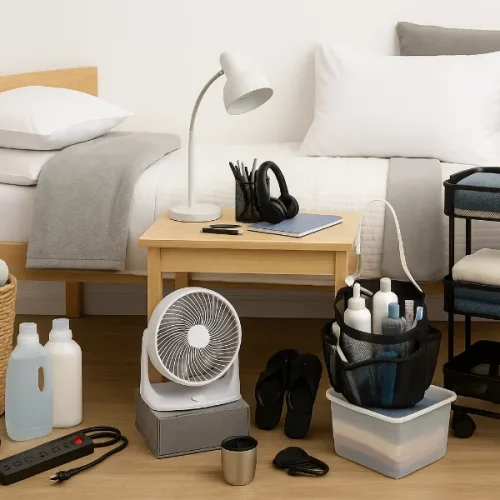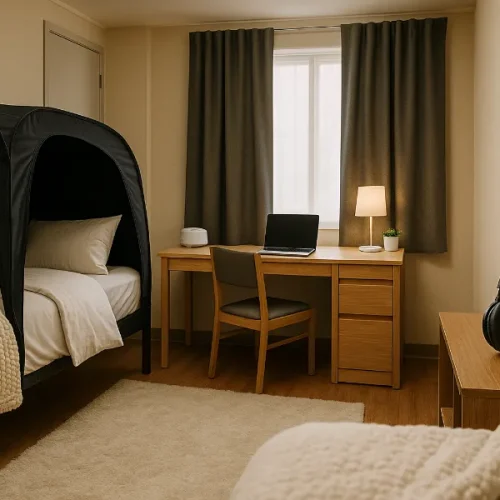Let’s be honest—living in today’s world feels like walking a tightrope sometimes. On one side, you’ve got your basic needs: a roof over your head, security for your belongings, and the essentials that keep life running smoothly. On the other, there’s this constant stream of shiny new gadgets, apps, and innovations promising to make everything easier, faster, and better.
The real challenge? Figuring out how to embrace progress without losing sight of what actually matters. You don’t want to be left behind in the Stone Age, but you also don’t need every new thing that hits the market. It’s about making smart choices that protect what you have while staying connected to the opportunities that modern life offers.
Understanding Your Foundation of Security

Before you start thinking about the latest tech or trendy lifestyle upgrades, let’s talk about something fundamental: protecting what you already have. It’s not the most exciting topic, I know, but stick with me here.
Think about everything in your home right now. Your furniture, electronics, clothes, kitchen appliances, maybe some family heirlooms or that guitar you’ve been meaning to learn. Add it all up, and you’re probably sitting on more value than you realize. Now imagine something unexpected happens—a burst pipe, a break-in, or any number of things that could go wrong.
This is where traditional protective measures come into play. While everyone’s chasing the next big thing, the smart move is securing your foundation first. It’s like building a house—you wouldn’t start with the fancy chandelier before making sure the walls are solid, right?
Taking stock of your belongings and their value isn’t just about being cautious; it’s about being realistic. When you know what you have and what it would cost to replace, you can make informed decisions about protection. Getting proper coverage through home contents insurance gives you that peace of mind knowing your possessions are safeguarded against life’s unexpected curveballs.
The beauty of having this safety net is that it frees you up to focus on other things. You’re not constantly worried about “what if” scenarios because you’ve already handled them. It’s practical, it’s sensible, and it’s one less thing keeping you up at night.
Creating a Safety Net for Uncertainties
Life has a funny way of throwing surprises at us when we least expect them. One day everything’s running smoothly, and the next, you’re dealing with something you never saw coming. That’s just how it goes.
Being prepared doesn’t mean you’re pessimistic—it means you’re smart. It’s the difference between scrambling to fix things in crisis mode and having a plan that lets you handle challenges calmly. Think of it as your backup parachute. You hope you’ll never need it, but you’re sure glad it’s there.
Financial planning is a big part of this. Setting aside some savings, understanding your insurance coverage, and having emergency funds aren’t sexy topics for dinner conversation, but they’re the things that let you sleep well at night. And here’s the thing: when you’re not stressed about the basics, you actually have more freedom to explore new opportunities and innovations.
The key is finding balance. You don’t want to be so overly cautious that you’re paralyzed by fear, but you also don’t want to wing it and hope for the best. A solid safety net gives you the confidence to take calculated risks and try new things.
Embracing Technology in Daily Life

Now let’s talk about the fun stuff—technology. We’re living in an incredible time where the device in your pocket has more computing power than the computers that sent astronauts to the moon. Pretty wild, right?
Technology has completely transformed how we communicate, work, and manage our daily lives. Remember when you had to wait until you got home to check messages or look something up? Now, everything’s at your fingertips, anytime, anywhere. It’s changed the game entirely.
But here’s where it gets tricky: not all technology is created equal, and not every innovation is worth your money. The real question is whether something actually serves a genuine need in your life or if it’s just cool to have for a week before it ends up in a drawer.
When it comes to staying connected, having reliable mobile connectivity isn’t just nice to have—it’s essential for most of us. Whether you’re working remotely, keeping in touch with family, or just navigating daily life, your smartphone is probably your most-used tool. That’s why choosing the right device and service provider matters.
If you’re in the market for an upgrade, checking out options like the latest offerings from M1 can show you how modern smartphones combine practical functionality with innovative features that genuinely enhance your daily efficiency. We’re talking about better cameras for capturing memories, longer battery life so you’re not constantly hunting for chargers, and processing power that keeps up with your multitasking.
The point isn’t to have the newest thing just because it’s new. It’s about choosing technology that makes your life easier, keeps you connected to what matters, and actually gets used rather than collecting dust.
Making Technology Work for You
Here’s a little secret: you’re in control, not the technology. It’s easy to feel like you need to keep up with every trend, but the truth is, you get to decide what works for you.
Before buying any new gadget or signing up for the latest service, ask yourself a few simple questions: Will I actually use this regularly? Does it solve a real problem in my life? Is there something I already own that does the same thing? These questions are your filter for cutting through the marketing noise.
Functionality should always trump novelty. Sure, a device might have fifty different features, but if you only use three of them, those other forty-seven are just taking up space. Focus on what you actually need. A phone with an amazing camera matters if you love photography. A fitness tracker makes sense if you’re serious about health goals. But if you never use these features, why pay for them?
Also, think long-term. Technology that seems cutting-edge today might be outdated tomorrow, but quality devices with solid core features tend to hold their value and usefulness longer. It’s better to invest in something reliable that you’ll use for years than to constantly chase the latest release.
Smart Decision-Making Strategies

Let’s talk about money for a minute. There’s a huge difference between what something costs and what it’s actually worth to you. This distinction is what separates smart purchases from regrettable ones.
Price is just a number on a tag. Value is what you get out of something over time. A cheap item that breaks in three months has terrible value, even if the upfront cost was low. On the flip side, something more expensive that lasts years and improves your daily life? That’s value.
When you’re making any significant purchase—whether it’s for protection, technology, or anything else—consider the return on investment. How will this benefit you? How long will it last? What problems does it solve? Sometimes spending more upfront saves you money and hassle down the road.
Think about it in terms of daily use. If something costs a bit more but you’ll use it every single day, that cost spreads out over time. Compare that to impulse buys that seem cheap but end up unused—that’s money down the drain, no matter how little you spent.
The smartest approach is to do your homework. Research options, read reviews from actual users, compare features, and don’t rush. A little patience in the decision-making process often leads to much better outcomes.
Prioritizing Essential Over Desirable
We all want things we don’t necessarily need—that’s human nature. The trick is being honest with yourself about what’s essential and what’s just tempting.
Needs are straightforward: food, shelter, security, basic connectivity, transportation. These are non-negotiables that keep your life running. Everything else falls somewhere on the spectrum between “really useful” and “would be nice to have.”
Here’s a practical way to think about it: if something disappeared from your life tomorrow, how much would it actually impact your day-to-day? If the answer is “a lot,” it’s probably essential or at least very important. If the answer is “I’d barely notice,” it’s probably not worth prioritizing right now.
The psychology of want versus need is fascinating. Marketers are incredibly good at making us feel like we need things we don’t. That’s why taking a step back before major purchases is so valuable. Give yourself a cooling-off period—a day, a week, whatever makes sense. If you still want it after that time and can justify it, go for it. But often, the urgency fades, and you realize you’re fine without it.
Integrating Innovation with Practicality

So how do you actually bring all this together? How do you protect your practical foundation while still embracing the innovations that can genuinely improve your life?
The sweet spot is where traditional wisdom meets modern solutions. It’s using technology to enhance your security rather than replace it. It’s choosing innovations that complement your lifestyle rather than complicate it. And it’s being open to new ideas while staying grounded in what actually works.
Take home management as an example. Smart home devices can help you monitor security, control energy usage, and add convenience—but they work best when paired with solid basics like proper locks, insurance coverage, and common sense. Innovation amplifies the practical; it doesn’t substitute for it.
Or consider communication technology. Video calls let you stay close to distant family and friends, but they don’t replace the importance of maintaining those relationships in the first place. The tool is only valuable because of what it enables.
Sustainable Living Through Smart Choices
Here’s something that ties everything together: sustainability. And I don’t just mean environmental sustainability (though that matters too). I mean making choices that are sustainable for your life, your budget, and your peace of mind.
Choosing quality over quantity is a form of sustainability. Buying things that last rather than constantly replacing cheap items saves money and reduces waste. It’s practical and responsible.
Modern innovations can actually support this approach. Energy-efficient appliances save money over time. Durable electronics with good warranties reduce the replacement cycle. Digital tools that help you plan and organize can prevent wasteful spending and forgotten subscriptions.
The environmental angle matters too. When you make purchases that last longer and choose companies that prioritize sustainability, you’re contributing to something bigger than just your own household. It feels good knowing your choices align with your values.
Conclusion
Balancing practical needs with modern innovations isn’t about choosing between the old and new—it’s about being strategic with both. Start with a strong foundation that protects what matters, then selectively embrace innovations that genuinely improve your life.
The smartest approach is staying grounded in your real priorities while remaining open to progress that serves those priorities. Protect your assets, choose technology that adds value, make decisions based on long-term worth rather than short-term excitement, and never lose sight of what truly matters to you.
At the end of the day, you’re in control. You get to decide which innovations earn a place in your life and which ones aren’t worth the investment. Make those choices deliberately, and you’ll find that perfect balance where security meets progress, and practical meets possible.
FAQs
Ask yourself this simple question: would your daily life be significantly harder without it? Practical needs are things like secure housing, reliable communication, and financial protection. Modern luxuries enhance life but aren’t essential for functioning. If you can comfortably live without it and it doesn’t solve a recurring problem, it’s probably a luxury. There’s nothing wrong with luxuries if you can afford them, but needs always come first.
Focus on three things: actual usefulness, longevity, and compatibility with your existing setup. Will you use it regularly, or will the novelty wear off quickly? Does it solve a real problem you have? Is it built to last, or is it cheaply made? Also consider ongoing costs like subscriptions or accessories. The best tech investments are ones that integrate seamlessly into your life and provide value for years, not just weeks.
Think of protection and innovation as partners, not competitors. Use modern security technology—like smart alerts or monitoring—alongside traditional protection methods. Ensure your valuable innovations themselves are protected through proper insurance coverage. Keep important documents and records backed up digitally. The key is letting technology enhance your security measures rather than replacing proven protection strategies entirely.
Sometimes yes, sometimes no—it depends on what improvements the newer model offers. If it’s just minor cosmetic changes, probably not worth it. But if there are significant upgrades in functionality, battery life, security features, or durability that match your needs, then it might be worth the investment. Always compare the actual benefits you’ll get against the price difference. Don’t pay for “new” just because it’s new—pay for better when better actually matters to you.













